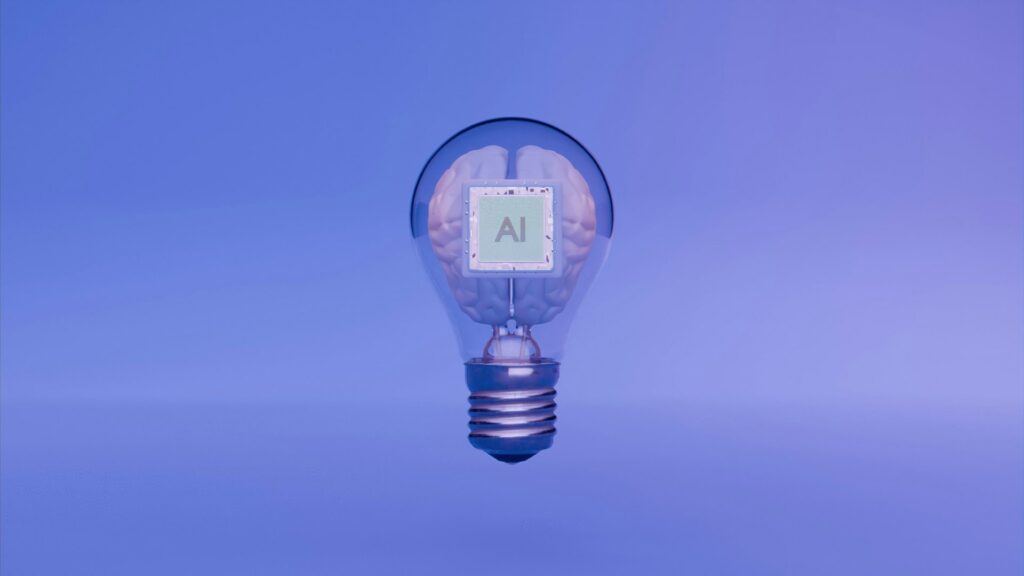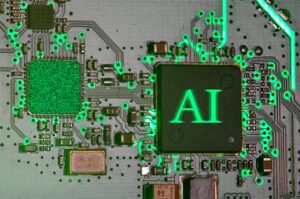Finding a Balance Between Innovation and Safety in Artificial Intelligence Regulation

Finding a Balance Between Innovation and Safety in Artificial Intelligence Regulation
As artificial intelligence continues to alter industries, economies, and societies, the topic of whether or not AI should be controlled has shifted to the question of how it should be regulated. AI’s rapid evolution has exceeded the laws that were intended to guide it, resulting in generative models that produce language that is eerily similar to that produced by humans and autonomous systems that make judgments in the real world. In order to safeguard society from misuse and injury, policymakers must strike a delicate balance between ensuring that innovation continues to flourish and protecting society from danger.
Not only will the future of artificial intelligence regulation determine the progression of technology, but it will also determine how mankind will coexist with increasingly sophisticated systems.
Why Regulation of Artificial Intelligence Has Become So Urgent
The power, accessibility, and autonomy of artificial intelligence systems are all increasing. There is a risk associated with this advancement, including the possibility of misinformation, algorithmic prejudice, abuse of surveillance, and job displacement. AI has the potential to exacerbate existing disparities or to make decisions that are not transparent or fair if it is not properly regulated.
A number of recent occurrences, ranging from scandals using deep fakes to mishaps involving driverless vehicles, have demonstrated that ethical monitoring cannot be an afterthought. The establishment of frameworks that are capable of keeping up with technological innovation is a race that is being fought by governments and organizations all over the world.
However, regulation must do so in a way that strikes a delicate balance: an excessive amount of control might hinder progress, while an insufficient amount can lead to chaos.
The International Movement Towards Artificial Intelligence Governance
When it comes to artificial intelligence (AI) regulation, countries and organizations are taking quite different methods, which reflects the cultural, political, and economic goals of each of them.
1. The Artificial Intelligence Act of the European Union (EU)
One of the first complete legal frameworks for artificial intelligence is the European Union’s Artificial Intelligence Act, which has taken the lead. Additionally, it places stringent duties on high-risk applications such as facial recognition, recruitment, and credit scoring. It classifies artificial intelligence systems according to their level of danger, ranging from minimum to unacceptable.
By putting an emphasis on safety, transparency, and human monitoring, the European Union (EU) has established a global standard for the development of responsible artificial intelligence.
2. The United States of America: Being Market-Driven and Sector-Based
The United States embraces a strategy that is less centralized. As opposed to relying on a single overarching regulation, it makes use of sector-specific rules (for example, healthcare, military, and transportation) and relies on standards that are hospitable to innovation that are developed by organizations such as the National Institute of Standards and Technology (NIST).
Despite the fact that this freedom fosters innovation, it also poses the risk of inconsistency and delayed enforcement across industries.
3. China: Ethics Under the Control of the State
For the purpose of ensuring that artificial intelligence systems are in accordance with state ideals and societal stability aims, China has instituted stringent content controls and algorithm limitations. Instead of putting an emphasis on individual rights or transparency, the focus is on ensuring safety and maintaining state oversight.
4. Emerging Frameworks to Consider for Other Regions
Some nations, like as Canada, Japan, and the United Kingdom, are developing artificial intelligence policies that combine innovation and responsibility. These policies frequently match with OECD principles that place an emphasis on human-centered AI and accountability.
Despite the fact that harmonization is still a difficulty, these regional efforts collectively indicate a worldwide push toward accountability for artificial intelligence.
The Fundamental Principles of Artificial Intelligence Regulation
Several fundamental ideas are emerging as common cornerstones of responsible artificial intelligence governance across all countries, including the following:
- Transparency requires that artificial intelligence systems be auditable, traceable, and explainable.
- The models must minimize bias and ensure that the outcomes are equitable. Fairness and non-discrimination are also important.
- It is imperative that businesses, developers, and deployers take responsibility for the results of artificial intelligence.
- Artificial intelligence must respect user consent and protect personal data in order to be considered privacy-friendly.
- Safety and Reliability: Artificial intelligence systems need to function in a secure and predictable manner, particularly in very important applications.
- Keeping humans “in the loop” for high-stakes choices is an important aspect of human oversight at all times.
- By adhering to these principles, artificial intelligence will be able to improve human wellbeing rather than diminish it.
Should We Be Too Quick or Too Slow When It Comes to Innovation?
Innovation in artificial intelligence depends on speed, which includes extensive data sharing, open cooperation, and quick iteration. Regulatory processes, on the other hand, are carried out at the same speed as legislative and administrative procedures. This generates a conflict that, depending on how it is managed, has the potential to either hold down progress or stimulate innovation that is safer.
It is possible that startups and researchers would be subjected to high compliance burdens, which will discourage experimentation, if the law is overly tight. Nevertheless, in the absence of monitoring, firms may implement unproven systems that result in results that are either detrimental or unintentional.
As a result, the ideal regulatory structure need to be flexible, allowing it to develop in tandem with technological advancements.
Testing artificial intelligence in a secure environment
The idea of artificial intelligence regulatory sandboxes, which are regulated environments in which inventors can test new systems while being supervised by regulatory authorities, is one option that shows promise. These sandboxes have been designed to foster experimentation while yet preserving accountability and safety concerns.
By implementing such programs, the European Union, Singapore, and the United Kingdom have already made it possible for artificial intelligence businesses to work together with regulators, improve their models, and uncover potential hazards before they are released to the public.
This concept has the potential to become a global standard for striking a balance between innovation and safety.
Ethics and the Role It Plays in Regulation
When it comes to defining intent, ethics is more important than laws. Developers and politicians can use ethical frameworks as a moral compass to guide their decision-making, which is something that laws are not currently able to do.
The adoption of artificial intelligence ethics committees, responsible AI guidelines, and value-based design principles that strive to promote fairness, diversity, and human dignity is becoming increasingly common across institutions and organizations.
It is conceivable that in the future, artificial intelligence regulation will combine ethical design with legal compliance, resulting in the creation of systems that are not only legally but also just.
Data Governance: The Cornerstone of Ethical Artificial Intelligence
Data, including how it is acquired, categorized, kept, and used, is the source of the majority of the hazards associated with artificial intelligence. Because of this, the process of regulation must start with data governance.
As a means of bringing together data privacy and data utility, new tools such as synthetic data, anonymization, and federated learning are coming into being. These techniques enable artificial intelligence systems to learn without revealing sensitive data, which is an essential step toward ethical scalability. Personal information is kept decentralized and encrypted using these techniques.
Responsibility on the Part of Businesses and Self-Regulation
By utilizing voluntary frameworks such as the following, IT companies are already exerting their influence on the regulatory landscape:
- The Charter of OpenAI, which places an emphasis on both safety and long-term benefit.
- Principles of artificial intelligence developed by Google, with an emphasis on privacy, justice, and transparency.
- The Responsible AI Standard developed by Microsoft, which allows for accountability across all teams.
- Although it has the potential to push industry standards, self-regulation also poses the risk of conflicts of interest, as it involves businesses monitoring themselves.
- Just internal ethics teams are not enough to ensure true accountability; external scrutiny is also necessary.
The necessity of global standards and the importance of international coordination
The effects of artificial intelligence are spread across the entire world. Nevertheless, the existing regulations continue to be scattered, which raises concerns about regulatory arbitrage, which occurs when businesses take advantage of places with the fewest restrictions.
In order to create baseline standards for artificial intelligence ethics, safety testing, and data protection, it is vital to have global coordination, possibly under organizations such as the United Nations, the Organization for Economic Cooperation and Development, or the G20. In the absence of international agreement, policies that are inconsistent could impede global collaboration or allow unsafe systems to have a greater chance of spreading.
Regulation that is both dynamic and adaptive is the future.
Next-generation artificial intelligence legislation will need to be dynamic, meaning that it will need to be regularly modified as technology advances. A few potential future approaches are as follows:
- Audits of algorithms for artificial intelligence systems with a high risk.
- employing tools driven by artificial intelligence to perform compliance monitoring in real time.
- Explainability criteria guarantee that model decisions are open and accessible to readers.
- There should be ethical certification for artificial intelligence devices that meet the criteria for safety and fairness.
- Artificial intelligence regulation will, in essence, evolve into a living system that will learn and adapt in the same way that the technology it supervises does.
Finding a Middle Ground: Innovation and Safety for the Future
It is not the purpose to manage artificial intelligence; rather, it is to connect its development with human values. By providing clarity and ethical certainty for innovators and investors, well-designed legislation has the potential to increase public trust, decrease risk, and drive innovation.
In order to strike a balance, it is necessary to draft laws that safeguard individuals without impeding progress. These laws should provide regulations that simultaneously foster creativity, competitiveness, and accountability.
Regulation of artificial intelligence in the future will determine the course of technology itself. The problem is extremely difficult to solve: how to protect the freedom of invention while also guaranteeing that artificial intelligence is ethical, transparent, and secure.
It is through collaboration that the answer can be found; collaboration between governments, researchers, businesses, and citizens. Together, they need to build frameworks that will enable artificial intelligence to serve humanity in a responsible manner.
The future of artificial intelligence is contingent on values, despite the fact that it may be built on algorithms. Regulation may ensure that artificial intelligence develops not as a force of disruption but rather as a force of progress, led by wisdom alongside intellect. This can be accomplished by striking a balance between innovation and safety.




